A few weeks ago, I tore into a stack of dead VCRs, salvaging interesting parts, recycling a lot of metal and plastic, and intending to reduce the volume they consumed. Unfortunately, the resulting lesser volume has been mounded up on my workbench instead of neatly stacked in the garage.
The insides of VCRs are familiar to most tinkerers, but some of the bits are more interesting in bulk.
The RCA jacks were what started the whole thing. I had been looking for jacks for some projects I was prototyping, and Ron Tozier gave me the pile of irreparable VCRs to disassemble for jacks. I was delighted by the brightly-colored bodies of several these — they’re almost like Legos.
The mechanical parts are nice, too. This isn’t even all of them yet, and I’ve already discarded the gears that have teeth only partway around. What’s left I’ve filed in a parts bin, with hopes that they’ll come in handy for random repairs. Jason at work has a crank-to-charge flashlight with a broken gear inside — maybe by now I’ll have something with the right pitch teeth to fix it.
These wiring harnesses, from the VCR in the lead photo, are fun in their bright colors. And I’ll need to check, but I think these may assist in bench repair of my SAE A502 amplifiers. They’re so tightly packed you can scarcely test them without taking boards out; and their wiring harnesses are so short, you can’t safely reconnect the boards once removed.
The displays are kind of interesting, and it’d be fun to repurpose them if I had the time to reverse-engineer the fluorescent drive system. The top one is my favorite — it has very bright red/green LEDs, and the PT6959 is a dimmable multi-segment matrix driver.
Of course I’m a sucker for rotary encoders. One of the devices from Ron was a portable CD/DVD player / receiver, and it had quadrature encoders for volume and tuner.
The encoder on the right is a very low-friction device that I believe ran the VCR timer / position counter. (There was one in each VCR, although I can’t find the others right now.) Seems like it could have interesting uses.
These pancake motors (I think it’s appropriate to call them that) are kind of cool, and they’re considerably larger than the ones I’ve seen in CD-ROM drives. The windings are the stator, and the surrounding rotor strip has alternating magnetic polarity around its circumference. My friend Mike Smith in Pittsburg rewound some smaller ones to use in DIY RC aircraft — I wonder whether I could interest him in some of these.
Finally, the read heads are simply beautiful, polished aluminum with very high-quality bearings. They remind me of the “doorknob” that “Yolanda” used to defeat the security system on Bolarafon (sp?) when she and Mal were stealing the Lassiter pistol.
Makes me wonder whether I could reverse-engineer the onboard electronics on one well enough to output a quadrature signal and use it as a rotary encoder for bench prototyping microcontroller circuits.
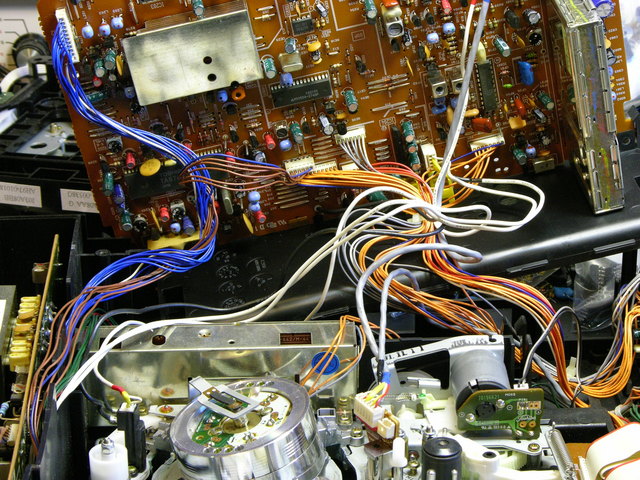
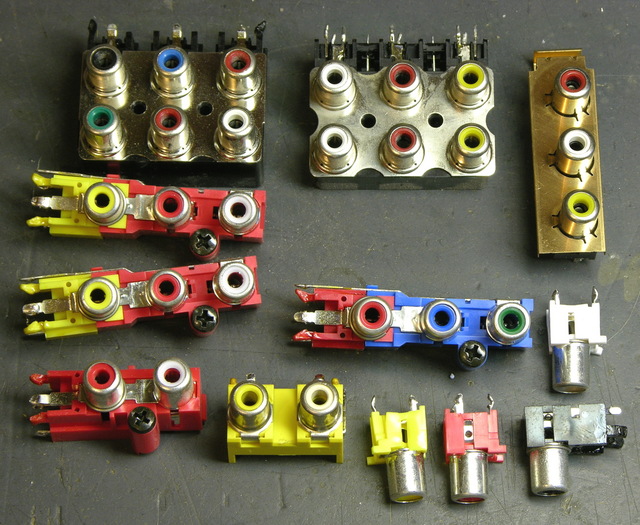
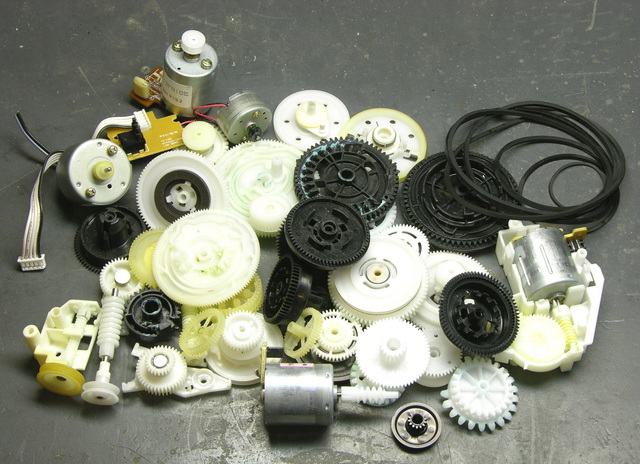
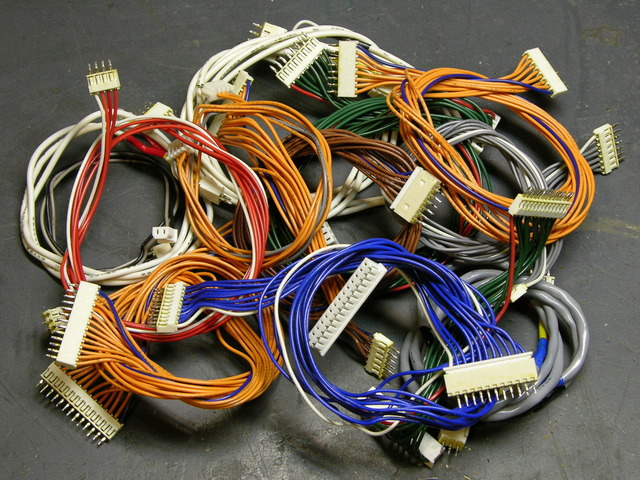
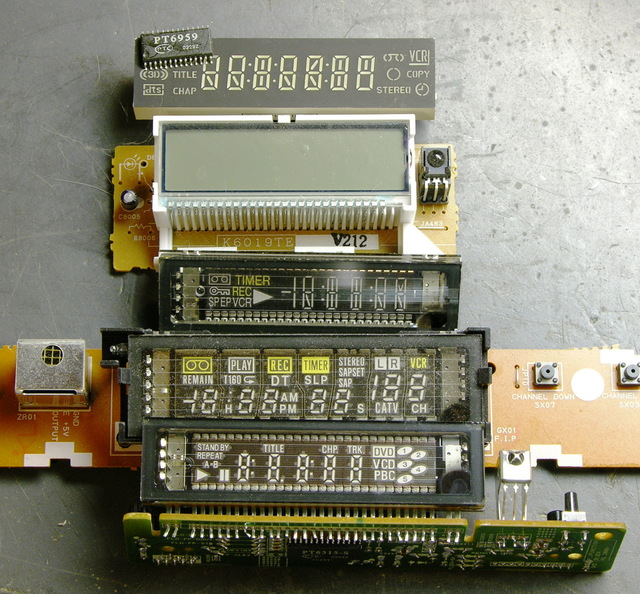
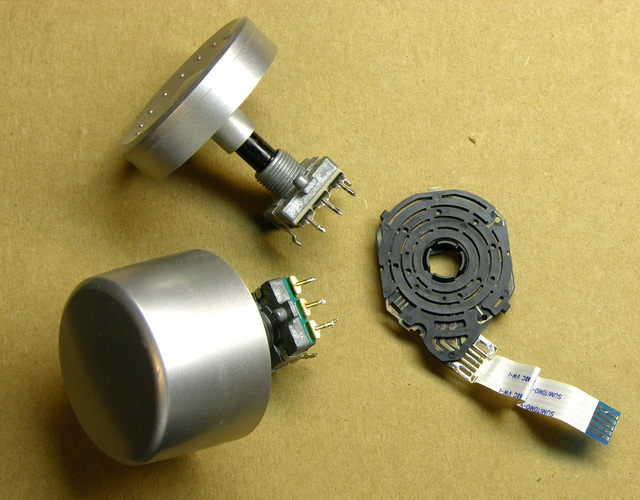
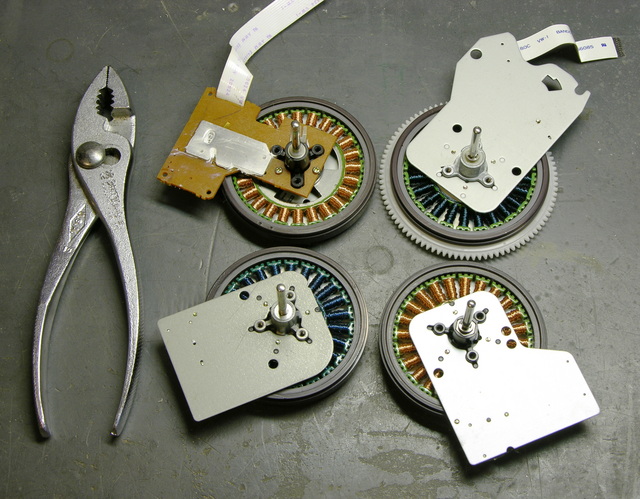
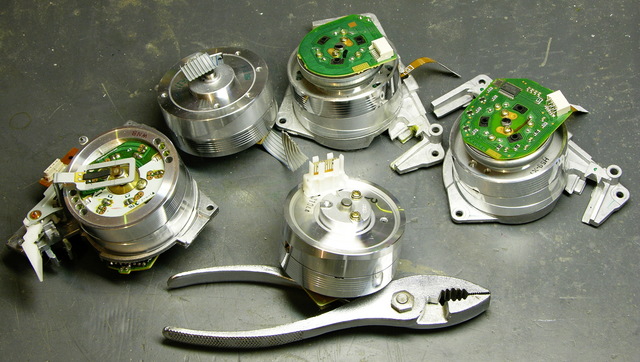
If you need a rotary encoder, there’s a low-tech way
http://www.axe-man.org/page.asp?lang=E&page=122
Axeman, nice construction!
Since I have the PCBs that the heads are attached to, I’m still a little curious whether there’s something in there I could use to detect the wheel turning.
Hey Keith,
I believe the “doorknob” Yolanda used to break past the security system with Mal was a Griffen Powermate (http://www.griffintechnology.com/products/powermate) with its USB cable cut off
Nick, nice find! I’ll have to go back to the DVD and compare.
I thought I remembered that her “doorknob” has a chord of the upper circle as an RGB-lightable strip that indicates the status of what she’s attempting, but I could be wrong. So they may have started with one of these, cut a slot into it, and added a piece of something to it.
Damn.. quite a project there. You’re building a robot right? Kidding..
Kidding..
That looks like soo much fun! I’m glad you’re putting old components to use.
OFF TOPIC:
I was watching a show on TV the other day about horrible conditions in countries like China. It showed impoverished citizens heating up old computer parts to extract the precious metals such as lead and tin. They used the same pans to eat with that they used to extract the metals… sad.
Since my server logs show this commenter arrived at my site via a Google search for “electronics blog,” spent only five minutes on my site, posted a comment, and hasn’t been back; and since the commenter supplied name, email, and URL all of a commercial nature; I’ve taken the liberty of removing the link to the commenter’s web site from this comment.
If the comment was genuinely intended to contribute to the community discussion, I’m sure the commenter won’t mind.
I would like to find a slip ring to use for a project, in which electricity needs to pass from something stationary to something spinning. I’ve been searching all over the internet for information about using slip rings from VCRs and found nothing. It seems that you would have come across one, if they could be found in VCRs?
Abby, interesting question! I’m guessing you’re referring to the spinning read head.
I think they may actually use inductive coupling these days, but I’m not sure. I do know that I haven’t taken any apart, so I’m not certain what’s inside. If you want to email me your postal address, I’d be happy to mail you one for you to dig into and see what you find.
You might also look at some of the spinning persistence of vision (POV) projects that have been featured on the Make Magazine blog. It’s possible they all put the POV controller onto the spinning part so they didn’t need slip-ring contact.
Are you hoping to find one that you can salvage, or find enough information to build your own? How many contacts do you need? What sort of size restrictions?
@Abby… yet another propeller clock? )))
)))
Yes, inside the assembly there is a sort of transformer (one winding in the base and one in the drum) for each head. But I think that you will need some “destructive” tests to find out maximum current that it can handle whitout melting. It’s easier to take some alternative road: for example you can generate power on the rotating part (using a coil and some well placed magnets, or another motor used as generator, if it’s possible)
Or you can modify a normal *brush* motor, stealing some current from the collector…
Thanks for the advice. I figured out a workaround for my project, so it’s not as urgent, but I’m still interested in the idea and have acquired some broken VCR for the destructive tests. I am using a motor as a wind speed sensor and doing POV on the spinning part. So I need to connect the wires on the base of the motor to the micro and also connect the LEDs. The brilliant solution (suggested by a friend) was to hold the spinning part still, so the base will rotate instead and all my electronics can be in the same place.
Abby, I’m delighted you have something worked out! If you’re blogging or posting photos of your project, I’d love to have you post a link here in the comments so I could check it out.
Do VCRs have any precious metals that can be salvaged?
Karen, there are probably trace amounts of precious and semi-precious metals in a VCR, like the tiniest amount of gold plating on some of the contacts, and copper in the circuit boards. But consider how inexpensive VCRs are and realize that the metals aren’t going to make you any money on your own. Best left to recycling centers that can barely scrape a living hauling tons of them off for metal reclamation.
The large stators could possibly be used for direct driving a rc helicopter’s main rotor. Finding two that match can often be a real challenge! Few motor builders ever attempt dd heli builds so they’re pretty rare. Tape backup drives are another good potential source for larger high quality stators.
Re-purposing a vfd is on my to-do list.